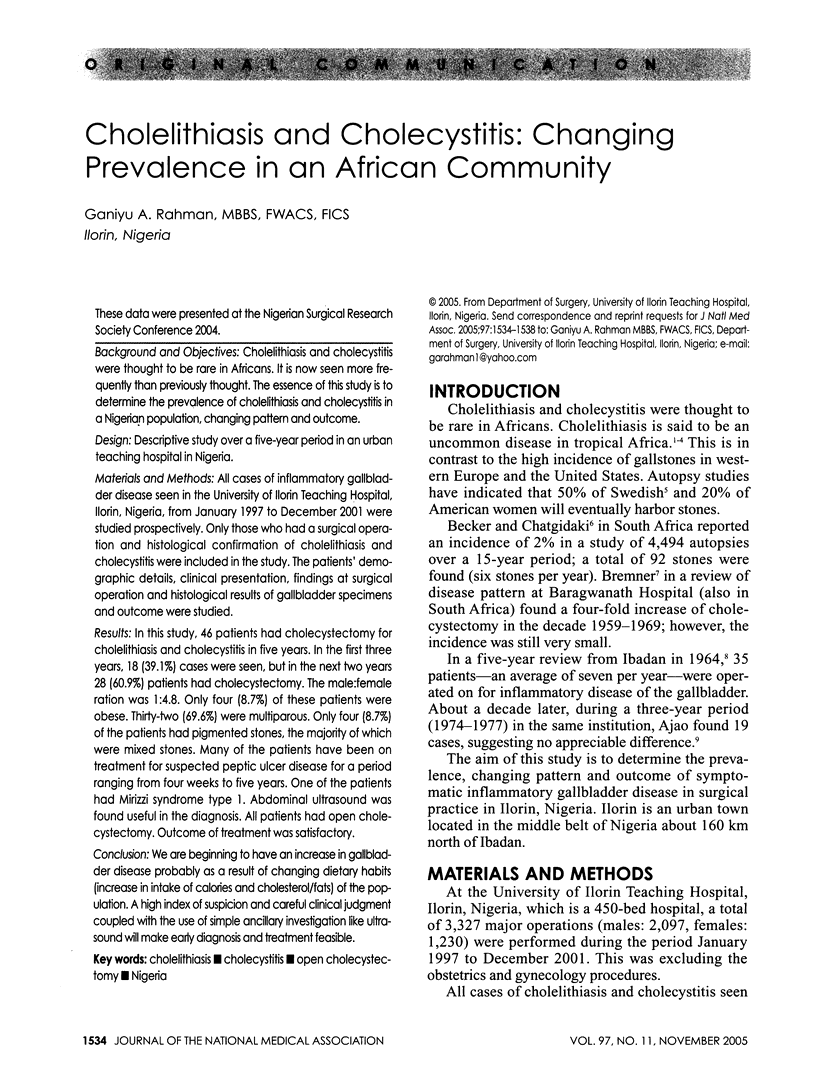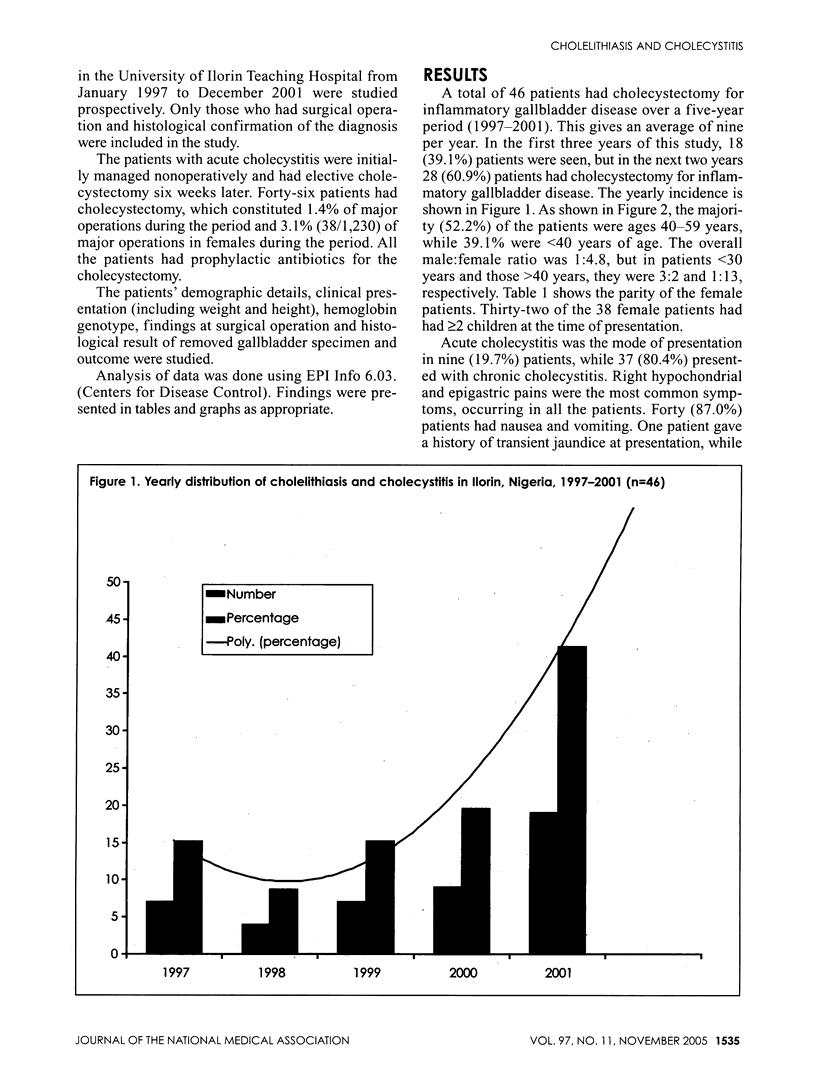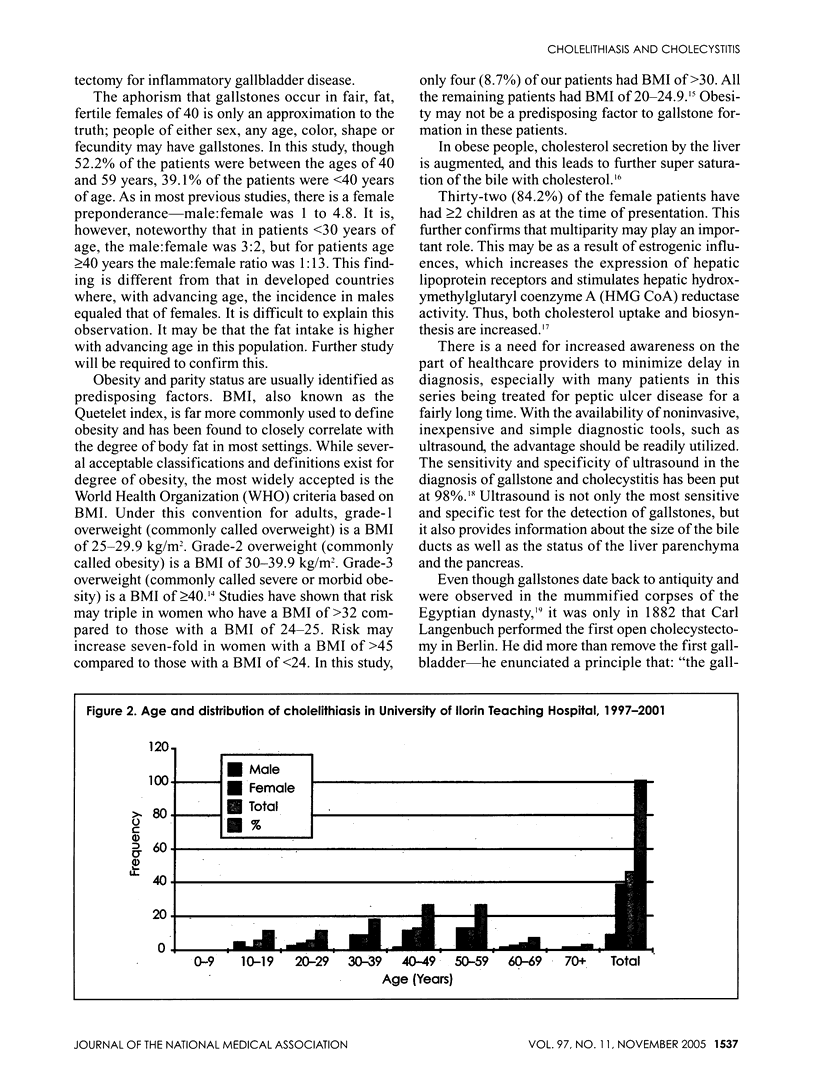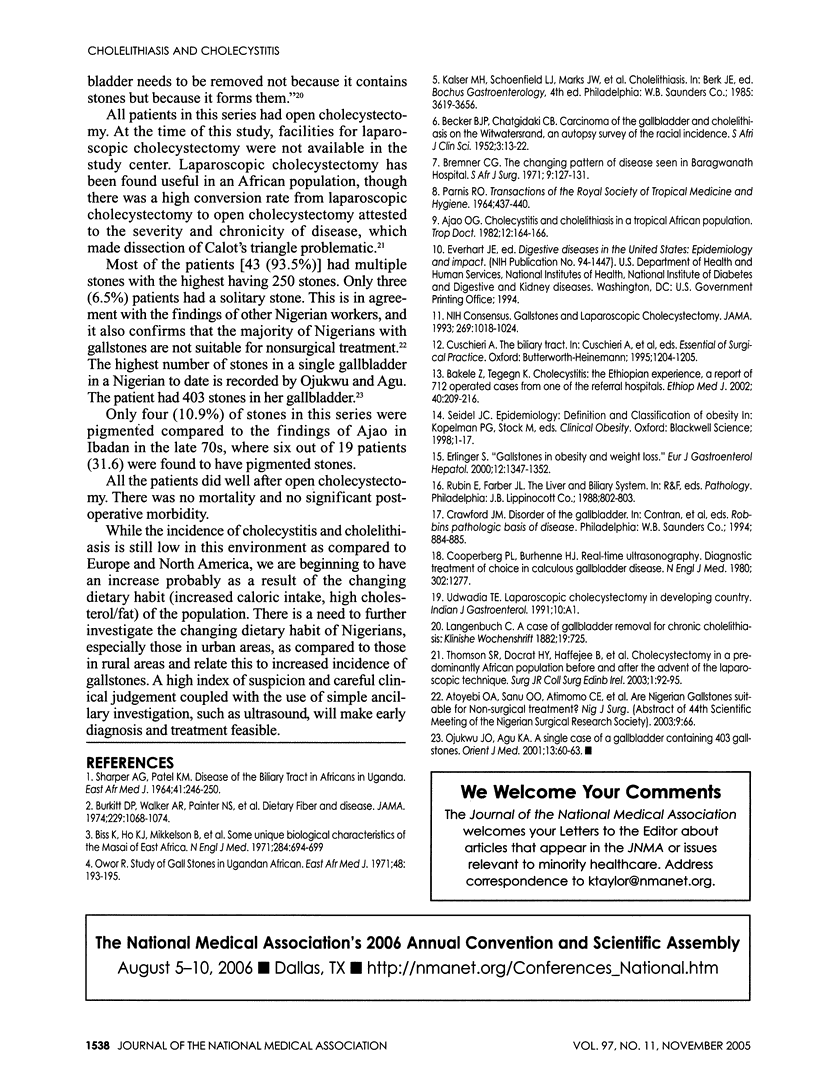Abstract
BACKGROUND AND OBJECTIVES: Cholelithiasis and cholecystitis were thought to be rare in Africans. It is now seen more frequently than previously thought. The essence of this study is to determine the prevalence of cholelithiasis and cholecystitis in a Nigerian population, changing pattern and outcome. DESIGN: Descriptive study over a five-year period in an urban teaching hospital in Nigeria. MATERIALS AND METHODS: All cases of inflammatory gallbladder disease seen in the University of Ilorin Teaching Hospital, Ilorin, Nigeria, from January 1997 to December 2001 were studied prospectively. Only those who had a surgical operation and histological confirmation of cholelithiasis and cholecystitis were included in the study. The patients' demographic details, clinical presentation, findings at surgical operation and histological results of gallbladder specimens and outcome were studied. RESULTS: In this study, 46 patients had cholecystectomy for cholelithiasis and cholecystitis in five years. In the first three years, 18 (39.1%) cases were seen, but in the next two years 28 (60.9%) patients had cholecystectomy. The male:female ration was 1:4.8. Only four (8.7%) of these patients were obese. Thirty-two (69.6%) were multiparous. Only four (8.7%) of the patients had pigmented stones, the majority of which were mixed stones. Many of the patients have been on treatment for suspected peptic ulcer disease for a period ranging from four weeks to five years. One of the patients had Mirizzi syndrome type 1. Abdominal ultrasound was found useful in the diagnosis. All patients had open cholecystectomy. Outcome of treatment was satisfactory. CONCLUSION: We are beginning to have an increase in gallbladder disease probably as a result of changing dietary habits (increase in intake of calories and cholesterol/fats) of the population. A high index of suspicion and careful clinical judgment coupled with the use of simple ancillary investigation like ultrasound will make early diagnosis and treatment feasible.
Full text
PDF




Images in this article
Selected References
These references are in PubMed. This may not be the complete list of references from this article.
- Ajao O. G. Cholecystitis and cholelithiasis in a tropical African population. Trop Doct. 1982 Oct;12(4 Pt 1):164–166. doi: 10.1177/004947558201200406. [DOI] [PubMed] [Google Scholar]
- BECKER B. J., CHATGIDAKIS C. B. Carcinoma of the gall bladder and cholelithiasis on the Witwatersrand; an autopsy survey of the racial incidence. S Afr J Clin Sci. 1952 Mar;3(1):13–22. [PubMed] [Google Scholar]
- Bekele Zenebe, Tegegn Kassahun. Cholecystitis: the Ethiopian experience, a report of 712 operated cases from one of the referral hospitals. Ethiop Med J. 2002 Jul;40(3):209–216. [PubMed] [Google Scholar]
- Biss K., Ho K. J., Mikkelson B., Lewis L., Taylor C. B. Some unique biologic characteristics of the Masai of East Africa. N Engl J Med. 1971 Apr 1;284(13):694–699. doi: 10.1056/NEJM197104012841304. [DOI] [PubMed] [Google Scholar]
- Bremner C. G. The changing pattern of disease seen at Baragwanath hospital. S Afr J Surg. 1971 Jul-Sep;9(3):127–131. [PubMed] [Google Scholar]
- Burkitt D. P., Walker A. R., Painter N. S. Dietary fiber and disease. JAMA. 1974 Aug 19;229(8):1068–1074. [PubMed] [Google Scholar]
- Cooperberg P. L., Burhenne H. J. Real-time ultrasonography. Diagnostic technique of choice in calculous gallbladder disease. N Engl J Med. 1980 Jun 5;302(23):1277–1279. doi: 10.1056/NEJM198006053022303. [DOI] [PubMed] [Google Scholar]
- Erlinger S. Gallstones in obesity and weight loss. Eur J Gastroenterol Hepatol. 2000 Dec;12(12):1347–1352. doi: 10.1097/00042737-200012120-00015. [DOI] [PubMed] [Google Scholar]
- Owor R. Study of gallstones in Ugandan Africans. East Afr Med J. 1971 Apr;48(4):193–195. [PubMed] [Google Scholar]
- SHAPER A. G., PATEL K. M. DISEASES OF THE BILIARY TRACT IN AFRICANS IN UGANDA. East Afr Med J. 1964 May;41:246–250. [PubMed] [Google Scholar]
- Thomson S. R., Docrat H. Y., Haffejee A. A., Singh B., Moodley J. Cholecystectomy in a predominantly African population before and after the advent of the laparoscopic technique. Surgeon. 2003 Apr;1(2):92–95. doi: 10.1016/s1479-666x(03)80122-1. [DOI] [PubMed] [Google Scholar]




